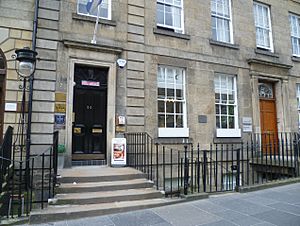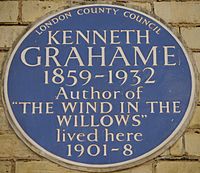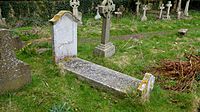Kenneth Grahame facts for kids
Quick facts for kids
Kenneth Grahame
|
|
|---|---|
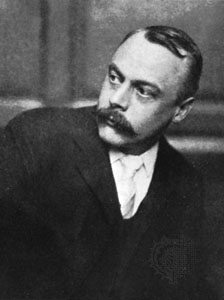
Kenneth Grahame in 1910
|
|
| Born | 8 March 1859 Edinburgh, Scotland, UK |
| Died | 6 July 1932 (aged 73) Pangbourne, Berkshire, England, UK |
| Occupation |
|
| Genre | Fiction |
| Notable works | The Wind in the Willows (1908) |
Kenneth Grahame (8 March 1859 – 6 July 1932) was a Scottish writer, most famous for The Wind in the Willows (1908), one of the classics of children's literature. He also wrote The Reluctant Dragon. Both books were later adapted for stage and film, of which A. A. Milne's Toad of Toad Hall was the first. The Disney films The Adventures of Ichabod and Mr. Toad and The Reluctant Dragon are other adaptations.
Contents
Personal life
Early life
Kenneth Grahame was born on 8 March 1859 in Edinburgh, Scotland. When he was a little more than a year old, his father, an advocate, received an appointment as sheriff-substitute in Argyllshire at Inveraray on Loch Fyne. Kenneth loved the sea and was happy there, but when he was five, his mother died of puerperal fever, and his father, who had a drink problem, gave over care of Kenneth, his brother Willie, his sister Helen and the new baby Roland to Granny Ingles, the children's grandmother, in Cookham Dean in the village of Cookham in Berkshire.
There the children lived in a spacious, dilapidated house called The Mount, in expansive grounds, and were introduced to the riverside and boating by their uncle, David Ingles, who was a curate at Cookham Dean church. This ambience, particularly Quarry Wood and the River Thames, is believed by Grahame's biographer Peter Green to have inspired the setting for The Wind in the Willows.
Grahame was an outstanding pupil at St Edward's School, Oxford. In his early years there, no sports regimen had been established and the boys were free to explore the old city and its surroundings.
Career
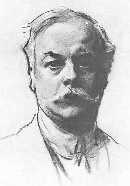
Grahame wanted to attend Oxford University, but was not allowed to do so by his guardian on grounds of cost. Instead he was sent to work at the Bank of England in 1879, and rose through the ranks until retiring as its Secretary in 1908 due to ill health, which may have been precipitated by a possibly political shooting incident at the bank in 1903. Grahame was shot at three times, but all the shots missed him.
An alternative explanation, given in a letter on display in the Bank museum, is that he had quarrelled with Walter Cunliffe, one of the bank's directors, who would later become Governor of the Bank of England, in the course of which he was heard to say that Cunliffe was "no gentleman". His retirement was enforced ostensibly on health grounds. He was awarded an annual pension of £400, but a worked example on display indicates he was actually due to receive £710.
Marriage and fatherhood
Grahame married Elspeth Thomson in 1899. They had only one child, a boy named Alastair (nicknamed "Mouse"), who was born blind in one eye and plagued by health problems throughout his short life. On Grahame's retirement, the family returned to Cookham, his home as a child, where they lived at Mayfield, now Herries Preparatory School. There Grahame produced the bedtime stories that he told Alastair and turned into The Wind in the Willows. Alastair took his own life on a railway track while an undergraduate at Oxford University, five days before his 20th birthday on 7 May 1920. Out of respect for Grahame, Alastair's demise was recorded as an accidental death.
According to Cardiff University Professor Emeritus Peter Hunt, Grahame shared a house in London with a set designer, Walford Graham Robertson, while Grahame's wife and son lived in Berkshire.
Death
Grahame died in Pangbourne, Berkshire, in 1932. He is buried in Holywell Cemetery, Oxford. Grahame's cousin Anthony Hope, also a successful author, wrote him an epitaph: "To the beautiful memory of Kenneth Grahame, husband of Elspeth and father of Alastair, who passed the river on the 6th of July, 1932, leaving childhood and literature through him the more blest for all time."
Writing
While still a young man in his twenties, Grahame began to publish light stories in London periodicals such as the St. James Gazette. Some of these were collected and published as Pagan Papers in 1893, and two years later The Golden Age. These were followed by Dream Days in 1898, which contains The Reluctant Dragon.
There is a ten-year gap between Grahame's penultimate book and the publication of his triumph, The Wind in the Willows. During that decade, Grahame became a father. The wayward, headstrong nature he saw in his little son Alastair he transformed into the swaggering Mr. Toad, one of its four principal characters. The character in the book known as Ratty was inspired by his good friend, and writer, Sir Arthur Quiller-Couch. Grahame mentions this in a signed copy he gave to Quiller-Couch's daughter, Foy Felicia. Despite its success, he never attempted a sequel. The book is still widely enjoyed by adults and children. It has given rise to many film and television adaptations, while Toad remains one of the most celebrated and beloved characters in children's literature. In 1929, A. A. Milne wrote the play Toad of Toad Hall, which is based on part of The Wind in the Willows, which won the Lewis Carroll Shelf Award in 1958. In the 1990s, William Horwood produced a series of sequels.
Works
- Pagan Papers (1893)
- The Golden Age (1895)
- Dream Days (1898), including "The Reluctant Dragon" (1898)
- The Headswoman (1898)
- The Wind in the Willows (1908), illustrated by Ernest H. Shepard
- Bertie's Escapade (1949), illustrated by Ernest H. Shepard
Images for kids
See also
 In Spanish: Kenneth Grahame para niños
In Spanish: Kenneth Grahame para niños


